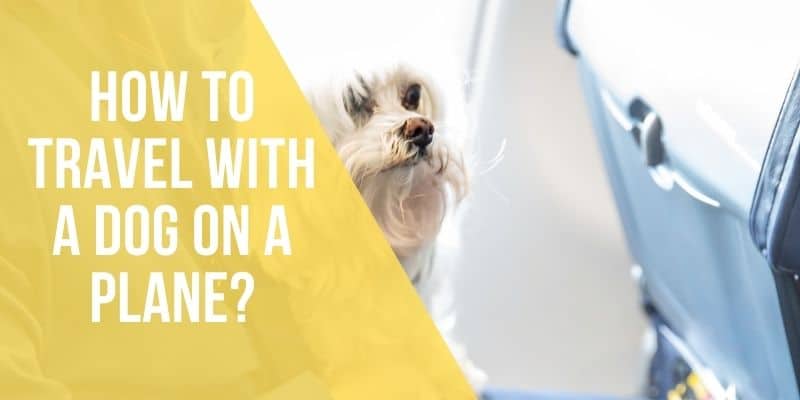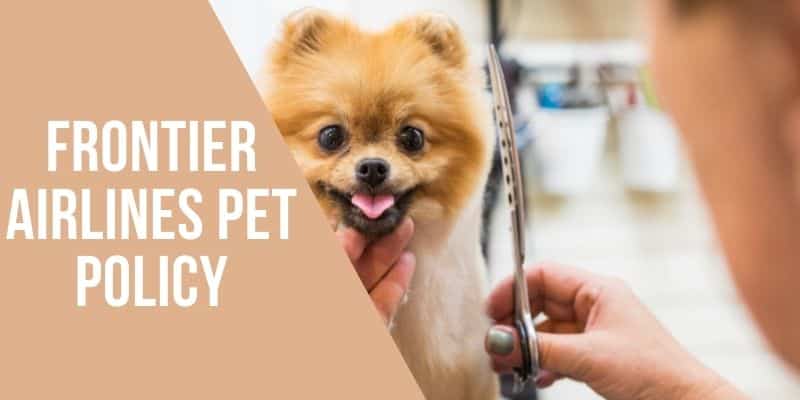Every aircraft has its own set of rules for handling the animals it travels. As a shipper or owner, you must also follow the proper protocols to ensure that the pet you are traveling with is safe.
Animals in a conventional crate are allowed to fly with their owners in the passenger cabin. Most airlines advise that no more than one pet per container be transported. Other carriers do not allow animals in the cabin; they are only permitted in the climate-controlled cargo compartment. The animals are treated with the utmost care in these compartments, which are equally safe and secure.
Flying with Pet Dogs in Cabin
Usually, aircraft just accept a certain number of dogs in the cabin. Most major airlines suggest pet owners contact ahead and notify them as quickly as possible because if there are no pet seats left, their pet will not be allowed to fly alongside. However, this restriction does not extend if the dog you’re flying with is a therapy or moral support dog.
Weight and Age restrictions
Typically tamed dogs who are under 20 lbs. are welcome in the passenger cabin with their pet parents.
Several airline companies do not allow young puppies to fly in-cabin with their parents due to age limitations.
If you’re flying with a dog that’s 16 weeks old or below, consults with the Airline Company and see if there are any age limits.
Fees
Fees vary from $95 to $150 for each trip and apply to all dogs but therapy or moral support dogs.
Carriers
If your canine is traveling in the cabin, it must fly in a TSA-approved dog crate (soft-sided or hard-sided) that is adequately conditioned and fits beneath the airline seat across from you completely.
Every airliner has its pet transport required specifications, so double-check that the carrier you’re going to use will suffice.
Documents and Registration
Although pet regulations are altering, several airline companies do not demand dog owners to present health documents for their pets before boarding. Regardless, it’s always a good idea to have your dog’s health records and registration with you in case of emergencies. Check ahead of time to see what papers your airline wants, as well as whether the venue (particularly tropical areas) demands documentation.
Flying With Large Dog in Cabin
Traveling with a large dog in the cabin is permissible provided that the dog is adequately leashed and equipped to travel.
Before traveling, several airlines need your dog to be at minimum 8 weeks old. Canines under the age of two are regarded to be too frail for long trips. In addition, your dog must be clean of parasites, lice, and contagious infections.
Traveling with a Service Dog
Service animals fly for free. Verify with the company you’re traveling with to see whether any documentation is necessary before boarding to avoid problems at the airport.
Flying with Pet Dogs in Cargo
Dogs weighing more than 20 pounds, unless they are moral support or service animals, would have to fly in the aircraft’s cargo compartment. Because the cargo compartment must be pressurized to facilitate pet transportation, not all airline companies provide this service.
Reservations
Several airline companies won’t let you register a dog on a cargo hold flight until 10 days ahead of your flight.
As planes can only carry a limited number of animals each trip, you should reserve a spot for your pet as soon as possible.
Booking a Cargo Hold Trip: Several airline companies won’t let you register a dog on a cargo hold flight until 10 days ahead of your flight.
Because planes can only carry a limited number of animals each trip, you should submit your request as soon as possible. Ask if the cargo room is air-conditioned if your dog is flying in the cargo. This is critical for the health of your dog.
Take into account that aircraft have weather limitations and will not allow you to travel with your dog if the expected temperature is above 85°F or under 45°F. Finding a plane that departs early morning or late at night is the best choice.
Carrier Requirement
Large canines must be kept in kennels that allow them to walk and lie comfortably, as well as turn their heads. It should also be spacious enough for them to stand and recline without their heads or ears reaching the container’s ceiling. A strong ceiling with no breaches and one durable steel door is also required for containers. Containers must be built of a sturdy material that will not bow under pressure.
Documentation
The documentation needed for your pet’s journey varies depending on where you’re heading and also where you’re traveling from. Ensure your pet has all of the necessary documents for your journey by contacting the consulates of the locations you’ll be visiting and your vet. All passengers transporting their canines via cargo will be requested to input all airline documents and obtain a medical certificate from the dog’s veterinarian. This wellness document must be provided before your pet’s departure (usually 10 days or less). If you’re taking your animal on a lengthy journey, you might need to acquire a fresh medical note for the trip back.
Breed Limitations
Each aircraft that transports dogs as cargo has its own set of breed limitations.
Certain breeds of dogs (such as English bulldogs) could be restricted from traveling owing to respiratory issues they may experience during the flight. Several breeds are permitted to travel, but during specific months, in specific carriers, as well as at specific ages. These limits are in place to protect your pet’s welfare.
Fees
One-way travel expenses for animals flying via cargo often range at $200.
FAQ
How much does it cost to fly a dog internationally?
There is a $125 cost per trip to transport your pet inside the United States, Canada, and Puerto Rico. That figure rose to $200 for overseas travel or visits to the US Virgin Islands. If you’re going to Brazil, though, the charge is only $75. It should be noted that the costs apply both ways and often just to one dog.
How to fly with a dog in-cabin?
An animal flying in a cabin must be contained in an enclosure that has been authorized.
The kennel must fit entirely beneath the front passenger seat and stay put under all circumstances.
More resource




